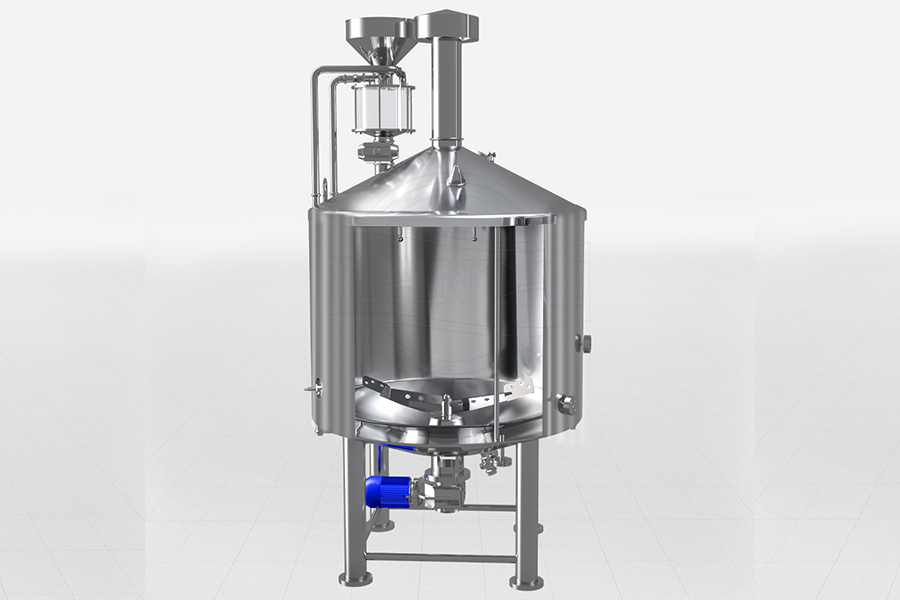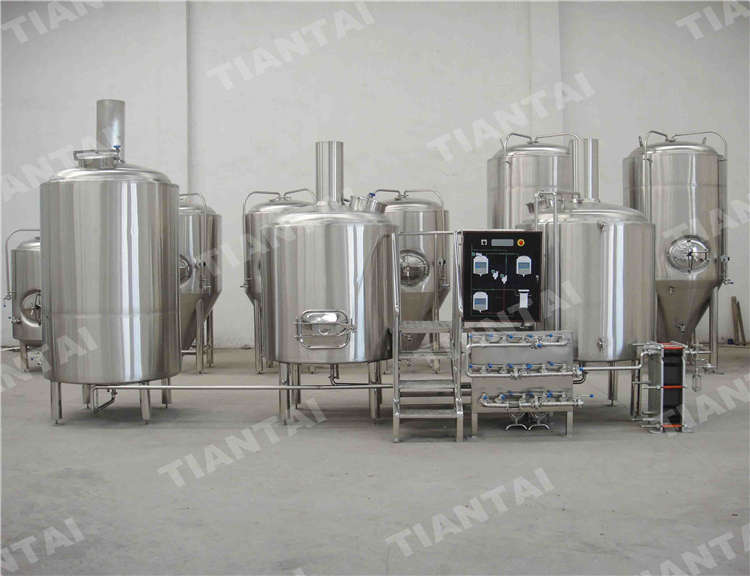In beer brewing, achieving the perfect balance of flavor, aroma, and alcohol requires precisely converting the starches in malted grains into fermentable sugars. This crucial step is called mashing, and the vessel responsible for this conversion is the wort tun. Understanding how the mash tun works and its crucial role in the brewing process is crucial for both new and experienced brewers. This article will explore the role of the mash tun in beer brewing, the mashing process, and the advantages of using a high-quality mash tun to improve beer consistency, efficiency, and flavor.
What is a mash tun?
A mash tun is a specialized vessel used in the brewing process to convert the starches in malted grains (such as barley) into fermentable sugars. The resulting liquid, called wort, is the foundation of alcoholic fermentation. During the mashing process, the mash tun ensures that the grains are mixed with water at a precise temperature, activating enzymes that break down the starches and release the sugars necessary for fermentation.
The primary function of the wort tun is to maintain a stable, consistent temperature throughout the mashing process, typically between 62°C and 67°C (144-153°F). This temperature range is crucial for the activation of two key enzymes—alpha-amylase and beta-amylase—that break down starch into fermentable sugars. The efficiency of this enzymatic conversion directly impacts the beer’s final flavor, alcohol content, and quality.
The Mashing Process in the Wort Tub
1. Heating the Mash
The first step in the mashing process is mixing the malt with water at a precisely controlled temperature. The wort tun ensures thorough mixing of the grains and water, bringing the wort to the target temperature for activating the necessary enzymes. This temperature is crucial for breaking down complex starches into simpler sugars.
2. Resting Phase
After the mash is heated, the wort tun holds it at a specific temperature for a period of time, allowing the enzymes to break down the starches into fermentable sugars. This step is crucial because the length and temperature of the resting mash affect the fermentability of the sugars, which in turn influences the alcohol content and taste of the final beer.
3. Wort Extraction
After the mashing stage, wort is extracted from the solid outer shell of the grain. This process involves separating the liquid wort from the solid particles, which are then discarded or used for other purposes. The resulting wort is then boiled and hops are added to impart bitterness, flavor, and aroma. The wort tun plays a crucial role in ensuring the efficient extraction process, ultimately resulting in clean, high-quality wort for fermentation.

Benefits of Using a Wort Tub in Beer Brewing
1. Batch Consistency
By maintaining a controlled temperature and efficient wort separation, the wort tun ensures consistent flavor, color, and alcohol content from batch to batch. This consistency is crucial for brewers who want to consistently produce a reliable product.
2. Efficient Sugar Extraction
The mashing process in the wort tun is designed to optimize the extraction of fermentable sugars from the grain. By maintaining an optimal temperature range and ensuring thorough mixing, the wort tun helps brewers extract a higher yield of fermentable sugars, resulting in higher alcohol content and improved fermentation.
3. Improved Flavor
The temperature and conditions during the mashing process play a significant role in the final flavor of beer. A wort keg allows brewers to control the temperature and timing of the wort, thereby producing a wide range of flavors. Whether you’re brewing a pale lager or a full-bodied stout, a wort keg allows brewers to fully realize the potential of the malt and grains used in the brewing process.
4. Versatility for Different Grains and Styles
A wort keg is versatile and can accommodate a variety of grains, from barley to wheat, rye, and specialty malts. This versatility makes it suitable for brewing a wide range of beer styles, from traditional ales and lagers to experimental beers.
5. Reduced Mashing Time
A well-designed wort keg helps speed up the mashing process, thereby shortening the overall brewing time. Faster mashing speeds result in more efficient use of resources, making the brewing process both time-efficient and cost-effective.
At Tiantai, we offer a variety of wort kegs to suit brewers of all levels, from beginners to experts. Our products are designed for efficiency, durability, and precision, helping brewers create the perfect beer every time.


